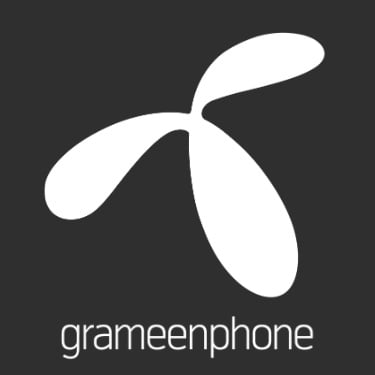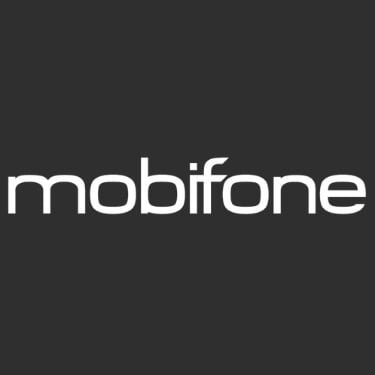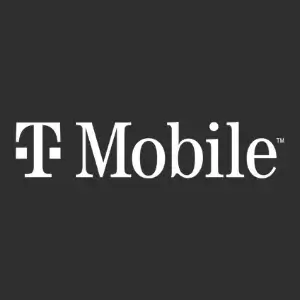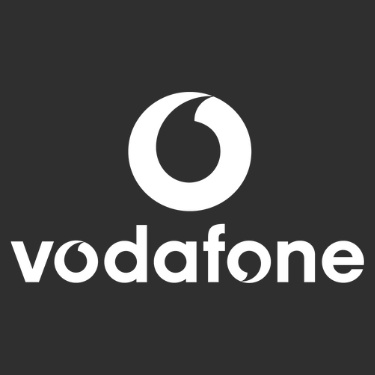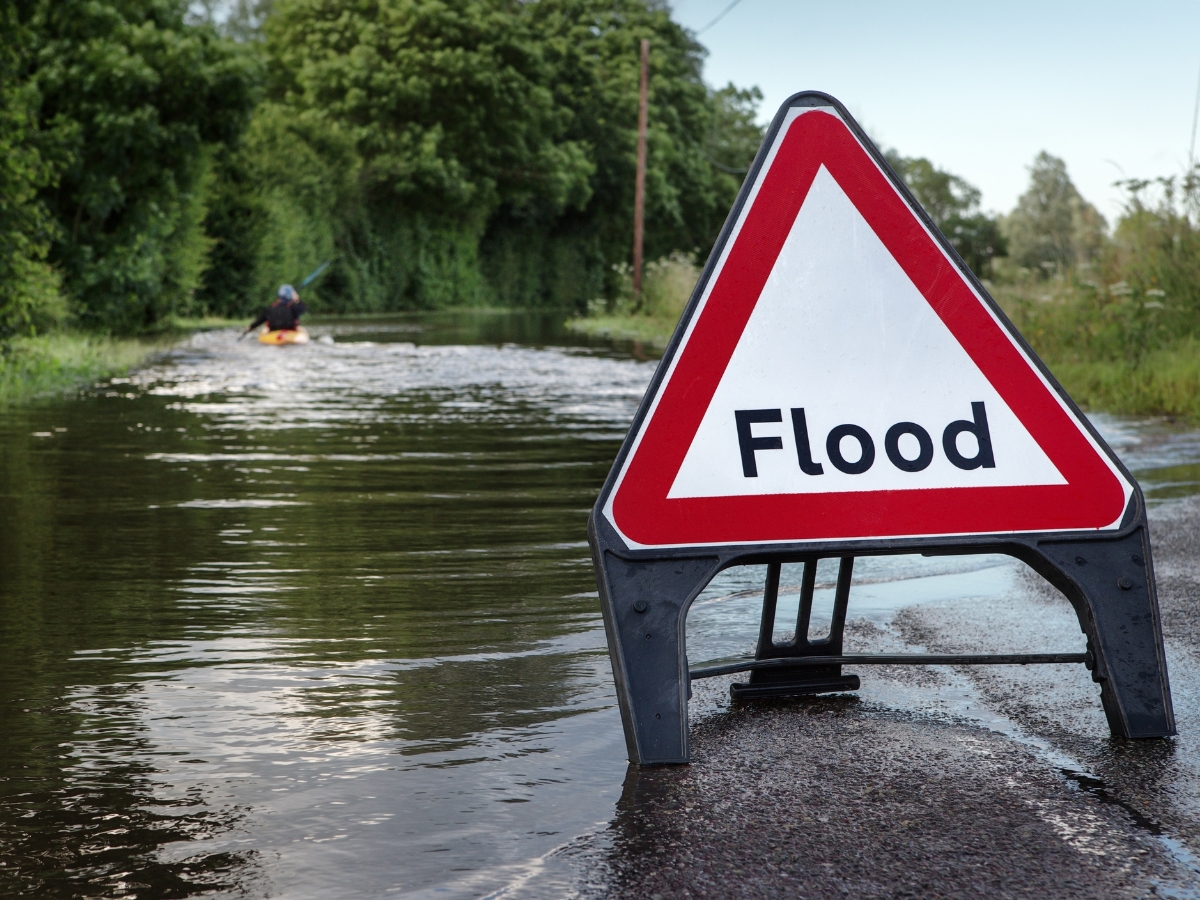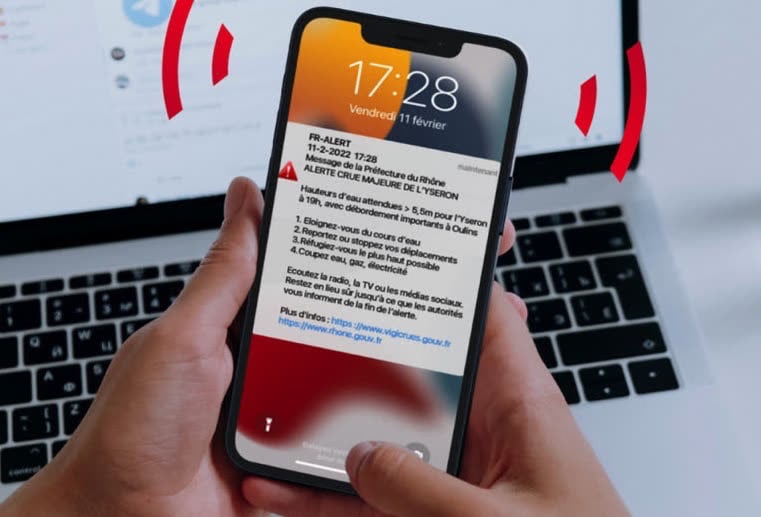
Public Warning System
In the face of natural disasters, terrorist threats, and large-scale emergencies, governments must be able to alert populations within seconds, with no dependency on apps or data connectivity.
Intersec’s mass notification solution enables public authorities to instantly deliver geo-targeted alerts via mobile networks, using Cell Broadcast and/or Location-Based SMS. CAP-compliant by design, it ensures national reach, reliability, and regulatory alignment.
→ Cell broadcast service for mass alerting
→ Location-based SMS for targeted alerts
→ [e-Book] Public Warning System
→ [Infographic] Public alerting technologies
→ [Infographic] Which alert channels for a major crisis?
National Public Warning System (PWS)
For public authorities
Our mass notification system uses real-time data and AI to help ministries and disaster agencies deliver rapid, geo-targeted, and accurate public alerts on a large scale, while ensuring full control, reliability, and alignment with public safety mandates.
For telecom operators
Our fully integrated, modular warning system is designed for governments and mobile carriers, offering secure cloud deployment options. It ensures regulation-compliant, low-latency public alerts with scalable reach and improved operational efficiency.
Multichannel approach
We promote a 3 layer architecture mobile-enabled warning system using Cell Broadcast and Location-Based SMS, while extending coverage beyond mobile networks through traditional media, digital platforms, and satellites, ensuring nearly 100% population coverage across all devices and conditions.
Multichannel PWS to leave no one behind
Cell Broadcast
moreCell Broadcast is a mobile alerting technology that sends messages to all devices connected to specific cell towers.
It is an instrumental technology when dealing with Early Warning and Emergency Warning in critical or degraded situations, or when time is of the essence, as it enables authorities to reach millions of people within seconds, without relying on phone numbers or overloading the mobile network. Cell Broadcast is especially valuable during emergencies requiring instant mass notification, such as earthquakes or cyclones.
Since alerts are geographically targeted based on cell coverage, they ensure area-specific relevance while remaining anonymous and privacy-preserving. CAP-compliant, Cell Broadcast is available on most modern phones. With near-total mobile phone penetration, it’s a fast, efficient, and highly reliable way to keep the population informed and safe.
Location-Based SMS
moreLocation-Based SMS sends text alerts to people based on their real-time or last-known location within a mobile network. This precise targeting makes LB-SMS ideal for localized threats such as flash floods, wildfires, or industrial accidents. It works across all SMS-compatible devices, without requiring prior app installation or opt-in, and is CAP-compliant for integration with national systems. LB-SMS is also multilingual and customizable.
Authorities can retarget individuals who enter or leave a danger zone, making alerts dynamic and situation-aware. As nearly everyone carries a mobile phone, LB-SMS provides a trusted and versatile way to alert both residents and visitors in a timely, personalized manner.
Digital channels & mobile apps
moreDigital channels include official websites, social media accounts, and emergency mobile apps used to share alerts and updates. They provide a rich, interactive experience, allowing the public to access detailed, real-time information during a crisis. Mobile apps can send geolocated push notifications, while social media platforms ensure rapid message virality.
These CAP-enabled channels support multimedia content and continuous updates, reinforcing trust and clarity. Digital channels are essential for reaching populations and extending coverage beyond traditional broadcasts. When paired with mobile alerting tools, they help create a resilient, multi-layered warning ecosystem.
Traditional channels
moreTraditional channels are established alert mechanisms like landline calls, radio and TV broadcasts, sirens, and digital signage. They remain vital for reaching people without mobile or internet access, such as the elderly, rural residents, or those in public spaces. Sirens and panels offer instant outdoor alerts, while radio and TV can deliver detailed instructions. Landlines ensure fixed-home coverage.
These systems are CAP-compatible and continue to serve as critical layers in national public warning infrastructures. Their familiarity and reliability make them excellent complements to modern mobile technologies, ensuring no segment of the population is left unprotected.
Satellites
moreSatellite alerting, including Galileo’s Emergency Warning Service, delivers messages directly from satellites to smartphones. This capability is essential for reaching areas with little or no mobile network coverage, such as remote regions, mountains, or open seas. Satellite-ready devices can receive alerts independently of terrestrial infrastructure, making satellite warning systems extremely resilient during major disasters.
Fully CAP-compliant, satellite alerts offer a reliable last-mile safety net and an additional layer of redundancy. As more smartphones become satellite-compatible, this technology is poised to play a key role in enhancing national and cross-border public warning systems.
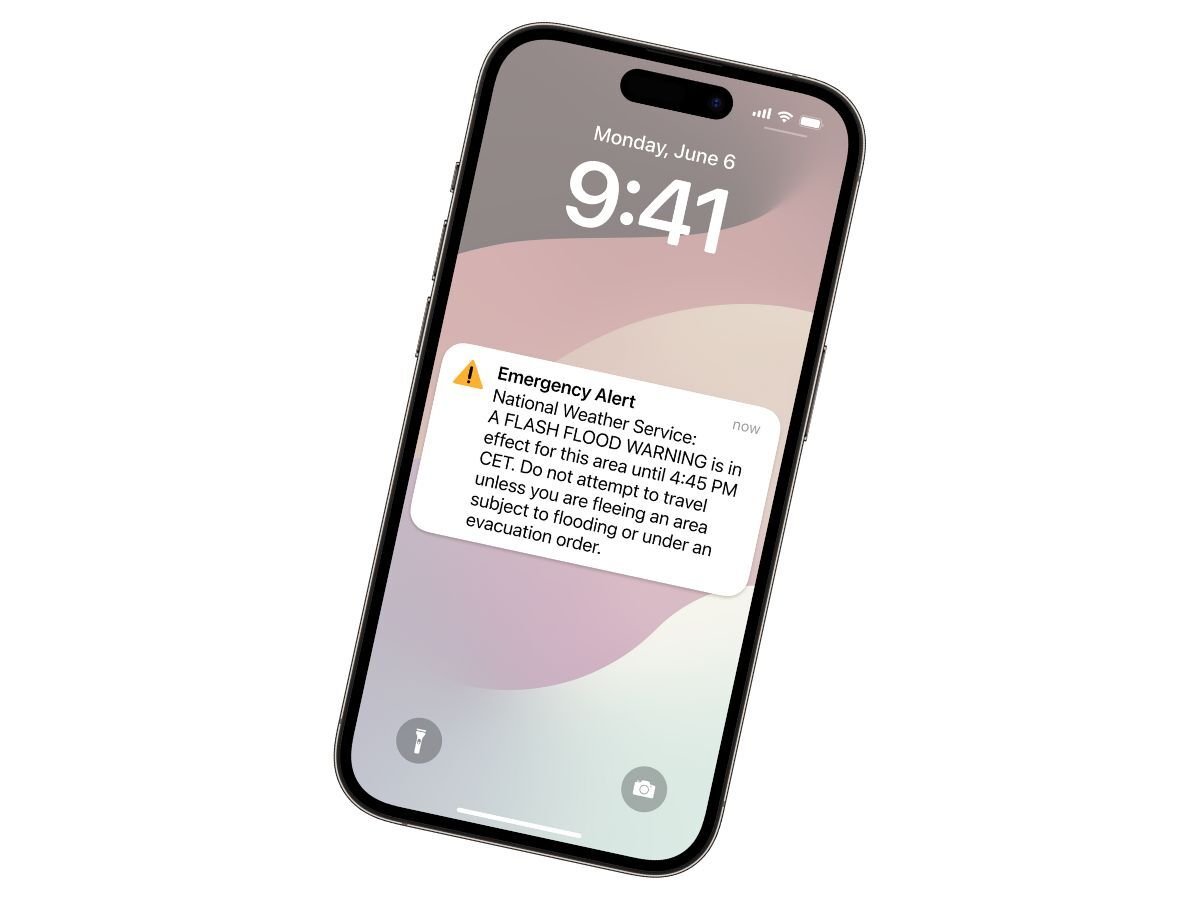


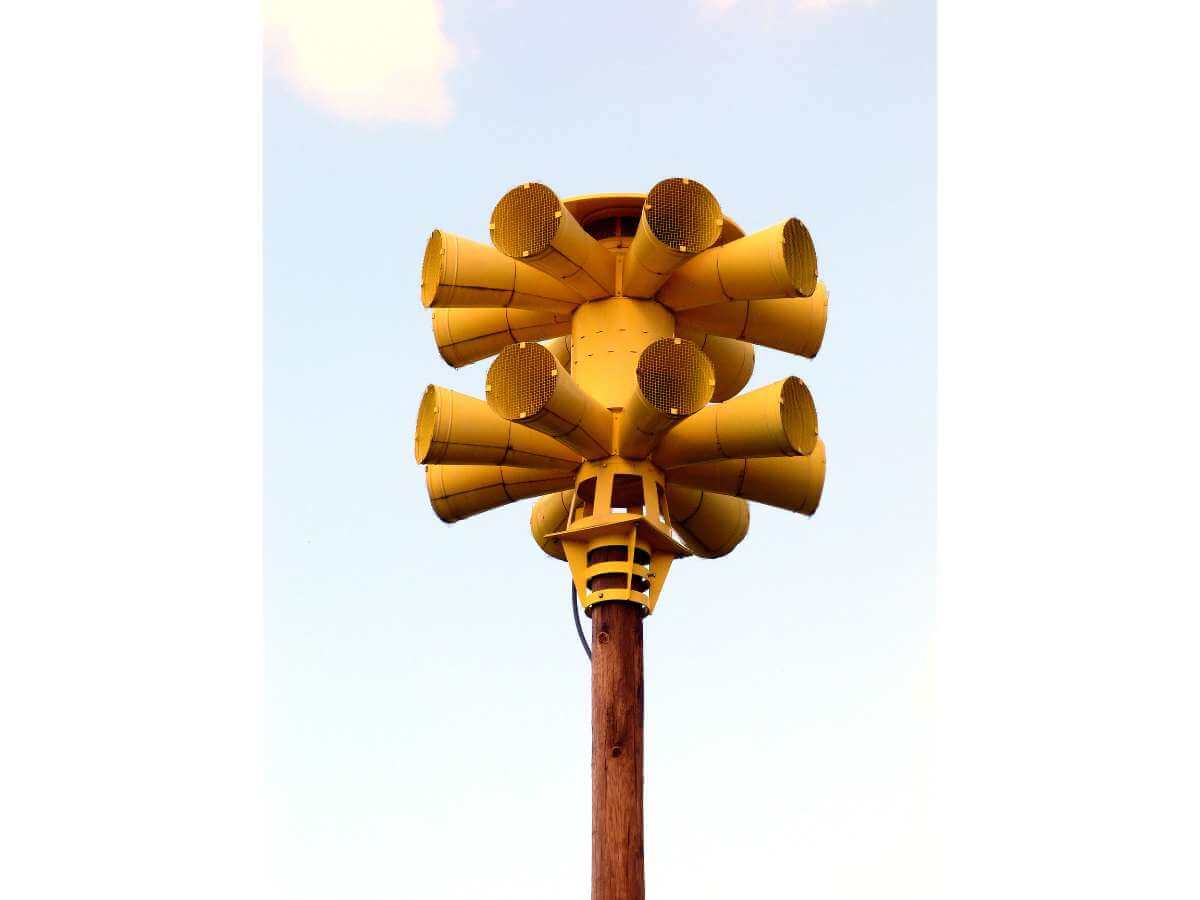
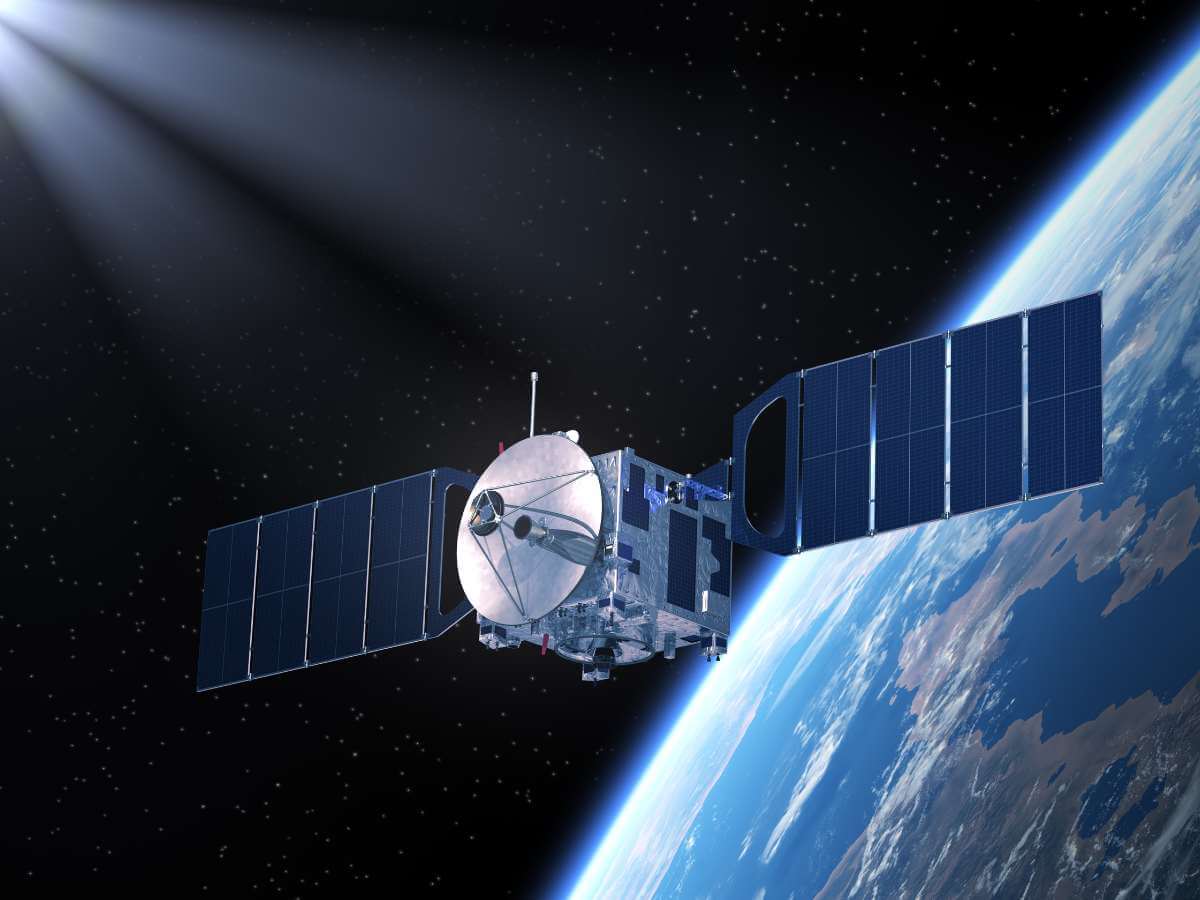
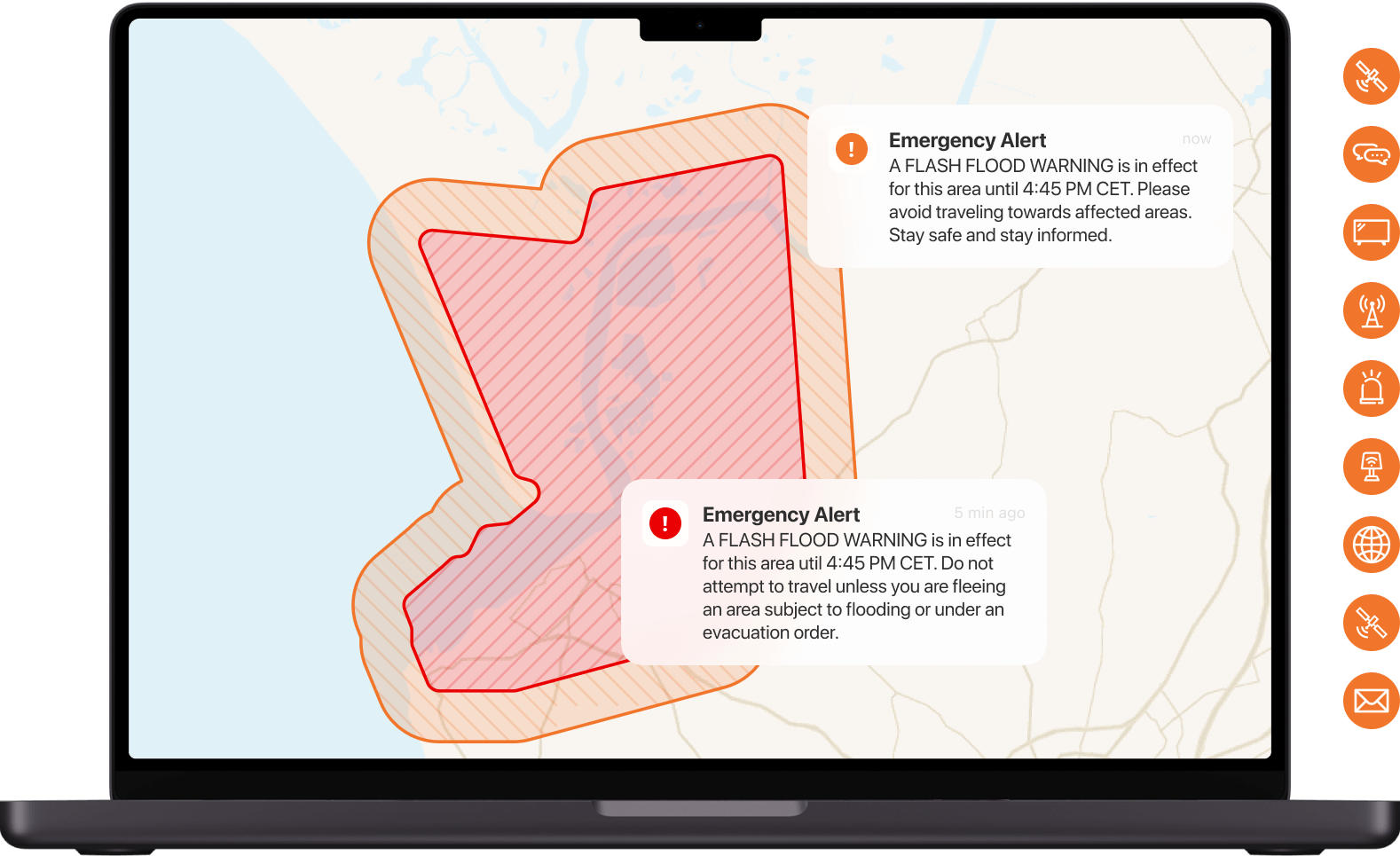
GeoSafe PWS
Alert communities exposed to risks
Our people-centered Public Warning Systems (PWS) help minimize the harm to people, assets, and livelihoods by triggering high-speed, highly contextualized, and geo-targeted alerts across all communication channels (cell broadcast, location-based SMS messages, mobile apps, satellites, social media, TV, radio, websites, sirens...). Our multichannel approach empowers crisis managers to adapt their messaging using live location data and advanced analytics. Our modular and scalable architecture is tailored for governments and mobile carriers.
Emergency notification system: key features
Multichannel dissemination
Geo-targeted alert dissemination
Alert creation and translation with AI
AI-assisted channel selection
Targeting and retargeting
Common Alerting Protocol (CAP)
Compliance with EECC standards
Real-time monitoring
Case studies: EU public warning systems
Context
Since June 2022, the European Electronic Communications Code (EECC) Article 110 requires all EU countries to operate a public warning system that can send geo-targeted emergency alerts to all mobile users located in the affected area in case of an emergency.
Progressing on technology transformation, the French Ministry of the Interior, alongside the three major national mobile operators – Orange, Bouygues Telecom, and SFR – selected the Intersec public warning solution to implement a fully integrated alerting architecture for the years to come.
Solution
-
100% coverage of cell phones in use in metropolitan France and French overseas territories (more than 80 million units)
-
Multi-channel portal combining all alerting media: Cell Broadcast, Location-Based SMS, sirens, social media, websites… and ready to integrate with Galileo
-
Tactical management of a crisis with real-time population heatmaps, retargeting capabilities, and highly contextualized communications
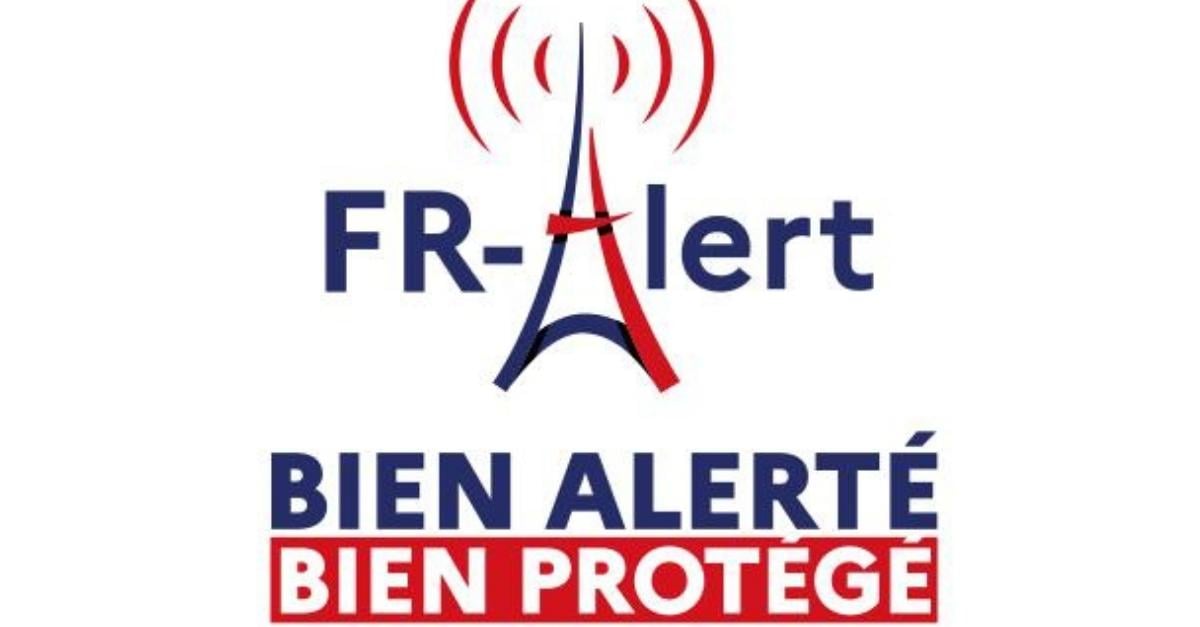
The Intersec team is highly professional, skilled, and experienced and has demonstrated great flexibility in adapting to our specific requests.
Romain Moutard
Director of the FR-Alert program
Context
Article 110 of the European Electronic Communications Code (EECC) mandated all EU countries to operate a public warning system that can send geo-targeted emergency alerts to all mobile users located in the affected area in case of an emergency.
Telefonica O₂ Germany was looking for a partner able to deploy Cell Broadcast technology in a collaborative manner, in full compliance with data privacy regulations, and in alignment with the EECC requirements.
Solution
-
As the European Union's leading public warning system provider and with 20 years of experience in the telco industry, Intersec had demonstrated its ability to deploy nationwide public warning systems at Tier-1 operators
-
Intersec partnered with Telefónica Ingeniería de Seguridad (TIS) to ensure seamless and smooth integration in record time
-
On 2022 Nationwide Alert Day – Warntag – Telefonica successfully broadcasted two alert messages - in German and in English – from the Federal Office for Civil Protection and Disaster Relief in just a matter of seconds, confirming the high-end performance of the solution

The high level of expertise and experience of the Intersec professional services team enabled a smooth integration in record time. This success is a testament to the relevance of this partnership, where Intersec's expertise and ours work together in the best possible way.
Victor Fortes
IT Project Manager, Telefonica
Context
Croatia, with a population of 4 million and a significant annual tourist influx, recognized the need for an advanced national PWS to respond to the European mandate for modern digital public warning systems. The Ministry of the Interior and Civil Protection Directorate aimed to enhance crisis communication, specifically targeting segments of the population in real-time during emergencies.
Key requirements included improved processes, new communication channels, and the ability to adapt mobile messaging based on individuals' changing positions relative to the crisis.
Solution
- Using cell broadcast and location-based SMS, Intersec provides the technology that will enable the MoI/CPD to provide early warning and subsequent crisis communications in case of national emergencies such as floods, fires, epidemics,or terrorist incidents
- The solution facilitates real-time crisis communication in foreign languages without violating personal data protection regulations.
- All three national telecommunications operators in Croatia confirmed participation, ensuring nationwide coverage and reaching up to 100% of mobile device users.

Ingolf Ruh
Chief Revenue Officer, Intersec
What our clients say
This innovative solution will significantly enhance our ability to alert and protect the public during emergencies. We can now ensure that vital information reaches citizens efficiently, enabling them to respond appropriately.
”Mr. Davor Božinović
Minister of the Interior, Croatia
The high level of expertise and experience of the Intersec professional services team enabled a smooth integration in record time. This success is a testament to the relevance of this partnership, where Intersec's expertise and ours work together in the best possible way.
”Victor Fortes
IT Project Manager, O₂ Germany
We were attracted by the completeness of the Intersec solution, by its experience in delivering messages on a very large scale depending on the real-time location of recipients, and by the willingness of its teams to keep this solution at the cutting edge of technology over the years to come.
”Romain Moutard
Director of the FR-Alert program
Frequently asked questions
What is a Public Warning System (PWS)?
moreA public warning system is a multichannel emergency alert infrastructure designed to deliver geo-targeted warnings to people in affected areas. These systems can send messages through cell broadcast, location-based SMS, mobile apps, sirens, social media, TV, radio, websites, and other channels. They enable real-time monitoring, automatic message translation, and integration with national and regional emergency protocols.
How can governments comply with EU public warning regulations?
moreUnder the European Electronic Communications Code (EECC) Article 110, EU member states must deploy public warning systems capable of sending geo-targeted alerts to mobile phone users in a defined area. Compliance requires using channels like cell broadcast or location-based SMS, with the ability to reach users regardless of mobile network or handset type.
What are the advantages of a multichannel public alerting approach?
moreA multichannel strategy ensures maximum reach and reliability, even when some networks or devices are unavailable. Delivering alerts through cell broadcast, SMS, apps, satellite, sirens, and broadcast media reduces the risk of single-point failures. Modern systems also offer AI-driven channel selection, real-time population analytics, and message personalization for more effective communication.
Why are public warning systems critical for disaster resilience?
moreThey enable authorities to quickly inform people about natural disasters, industrial hazards, health emergencies, and security threats. A robust system can trigger localized, reliable alerts that help save lives by prompting immediate protective actions.
Can a public warning system integrate with existing infrastructure?
moreYes. Modern platforms are designed to integrate with national emergency management centers, telecom operator systems, broadcast media, and satellite services. This allows for coordinated communication without replacing existing tools.
Featured content

Intersec Selected to Power Public Warning System in Slovenia
Get started with Intersec

We help telcos and public authorities embrace the digital revolution as we believe data transform the way our customers work.
Let us answer your questions and explain how we can help.
Subscribe to our newsletter
Some of our prestigious clients


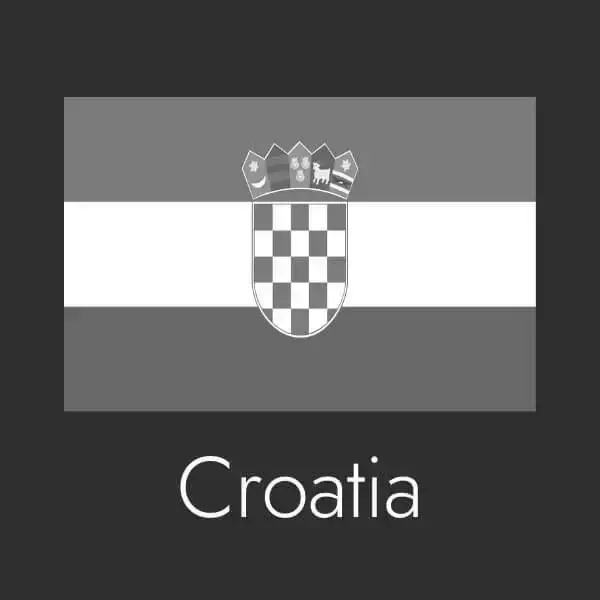




.webp)


.webp)
